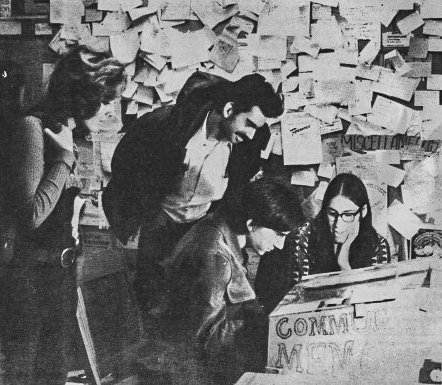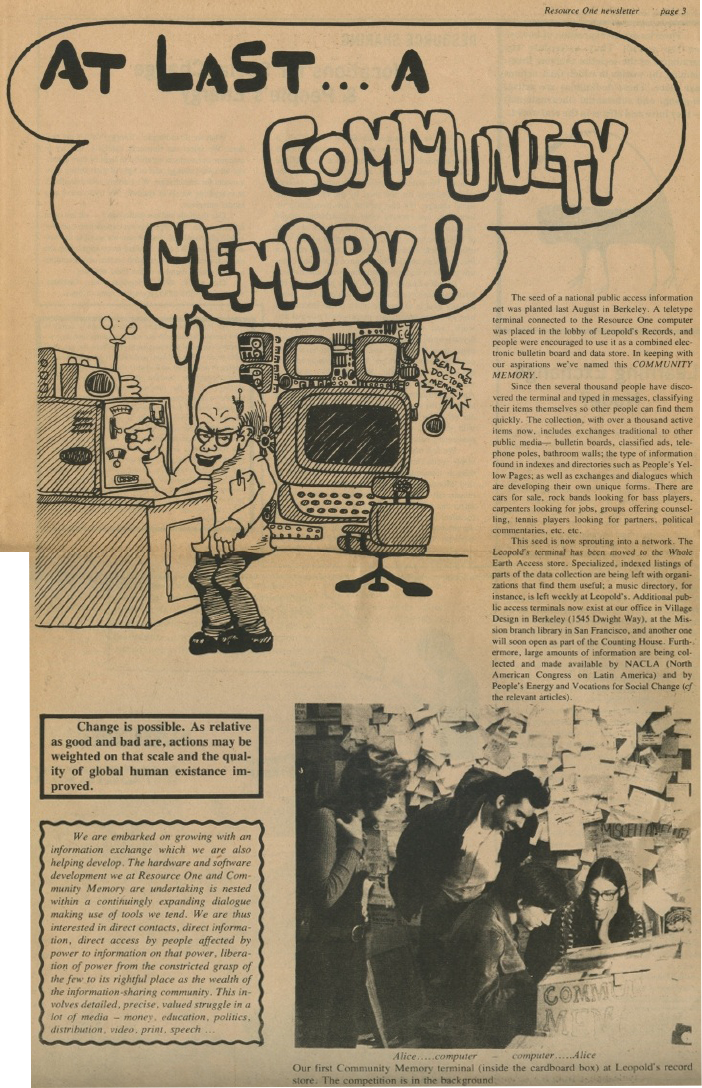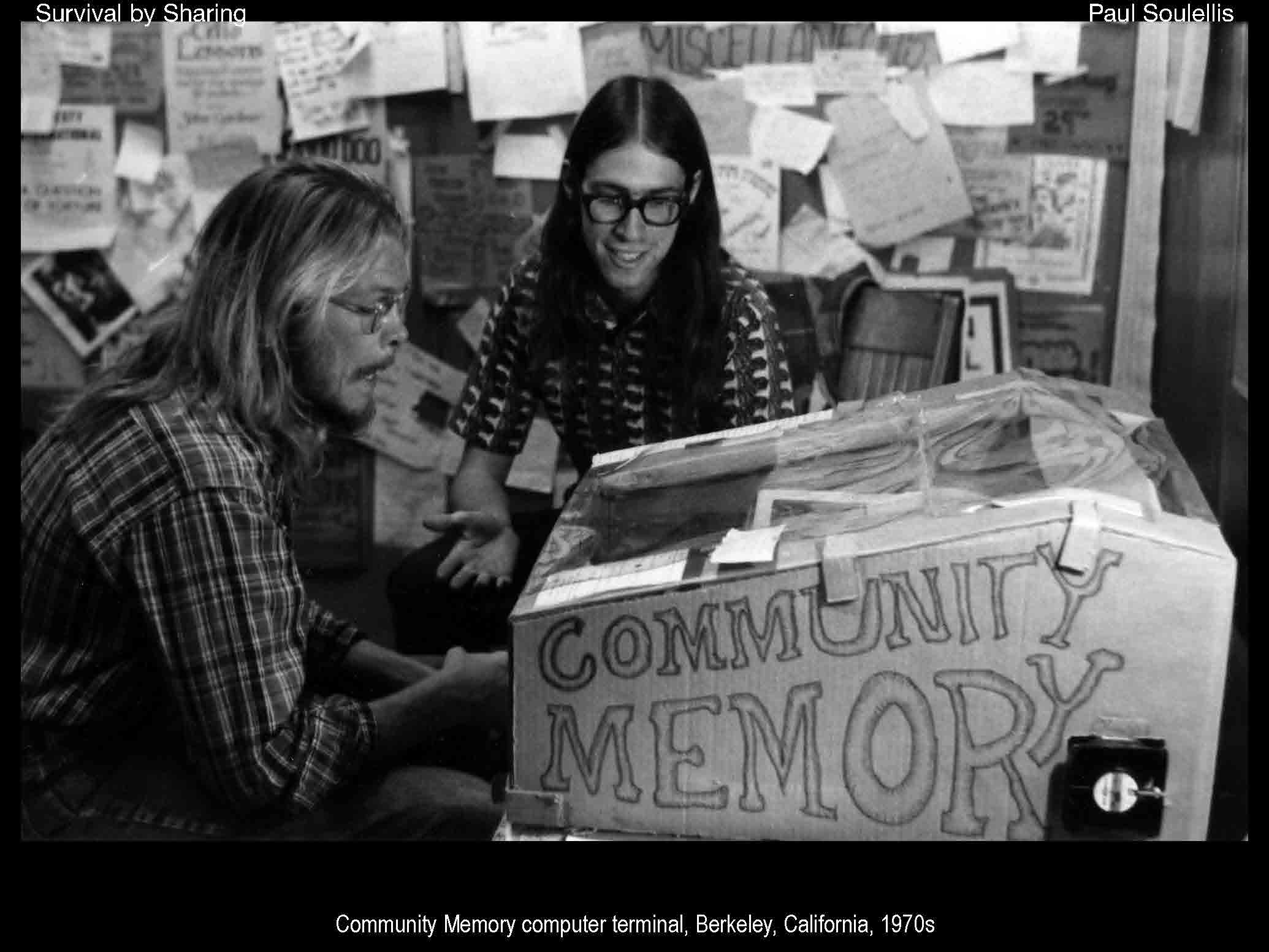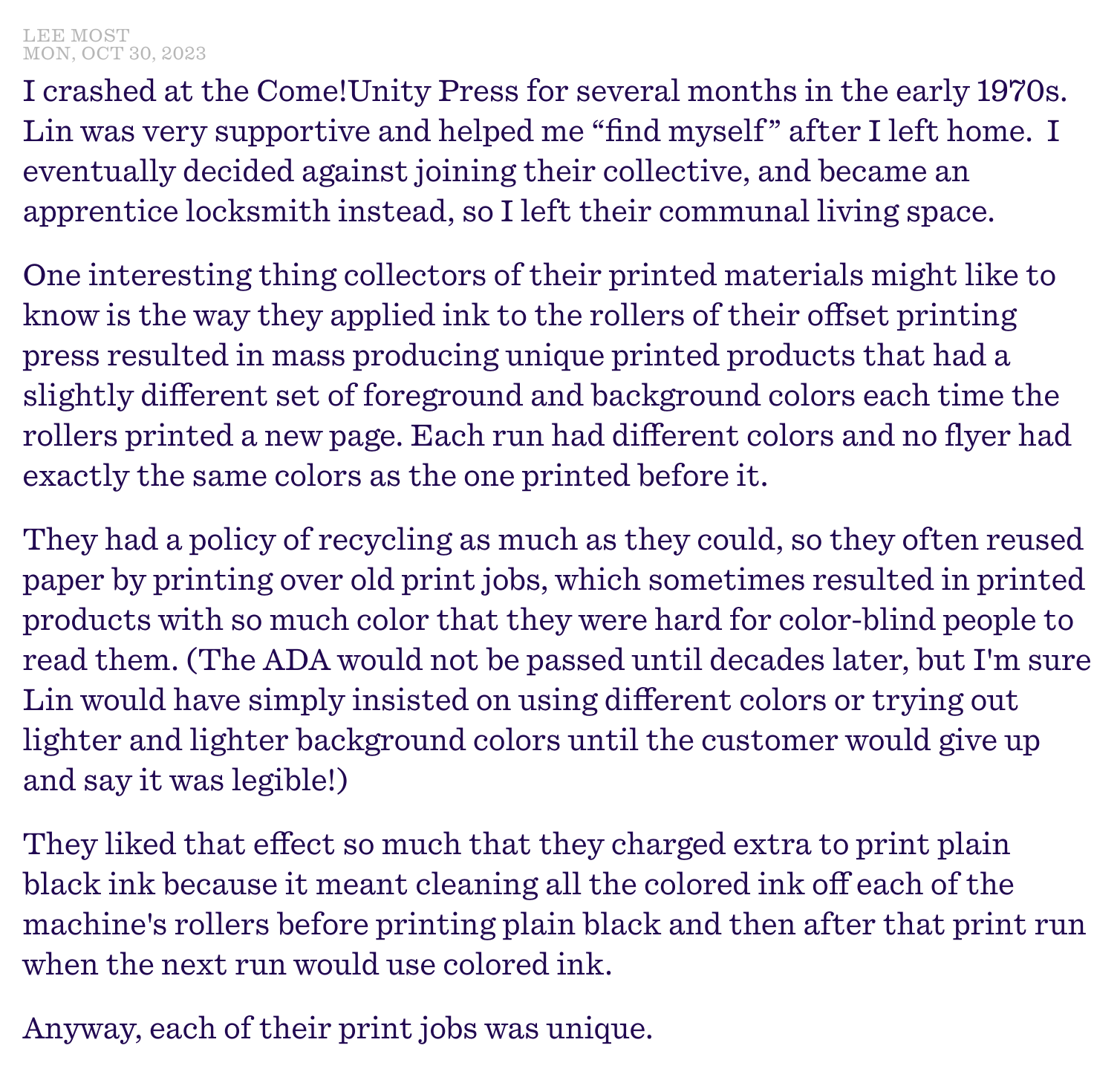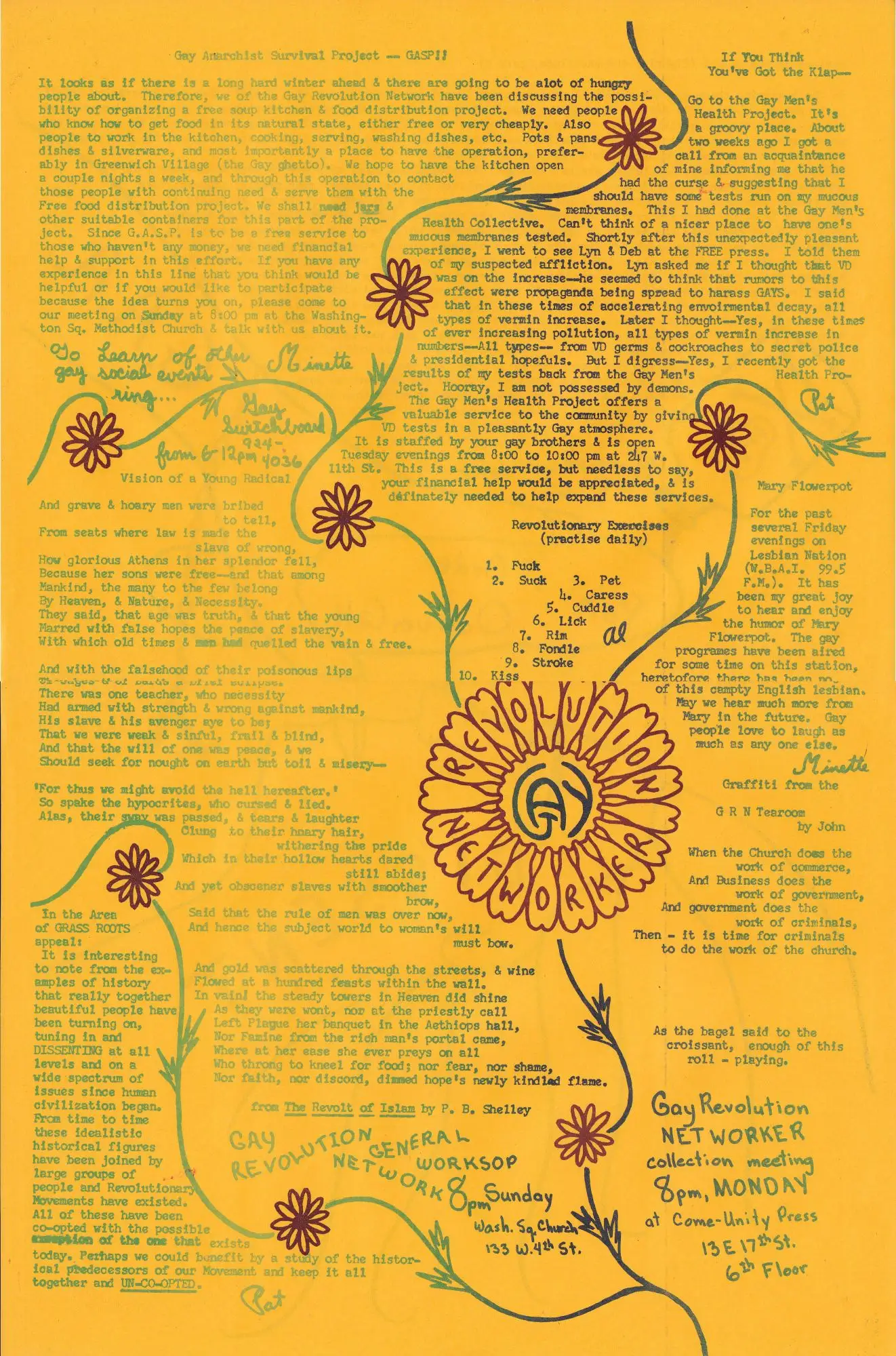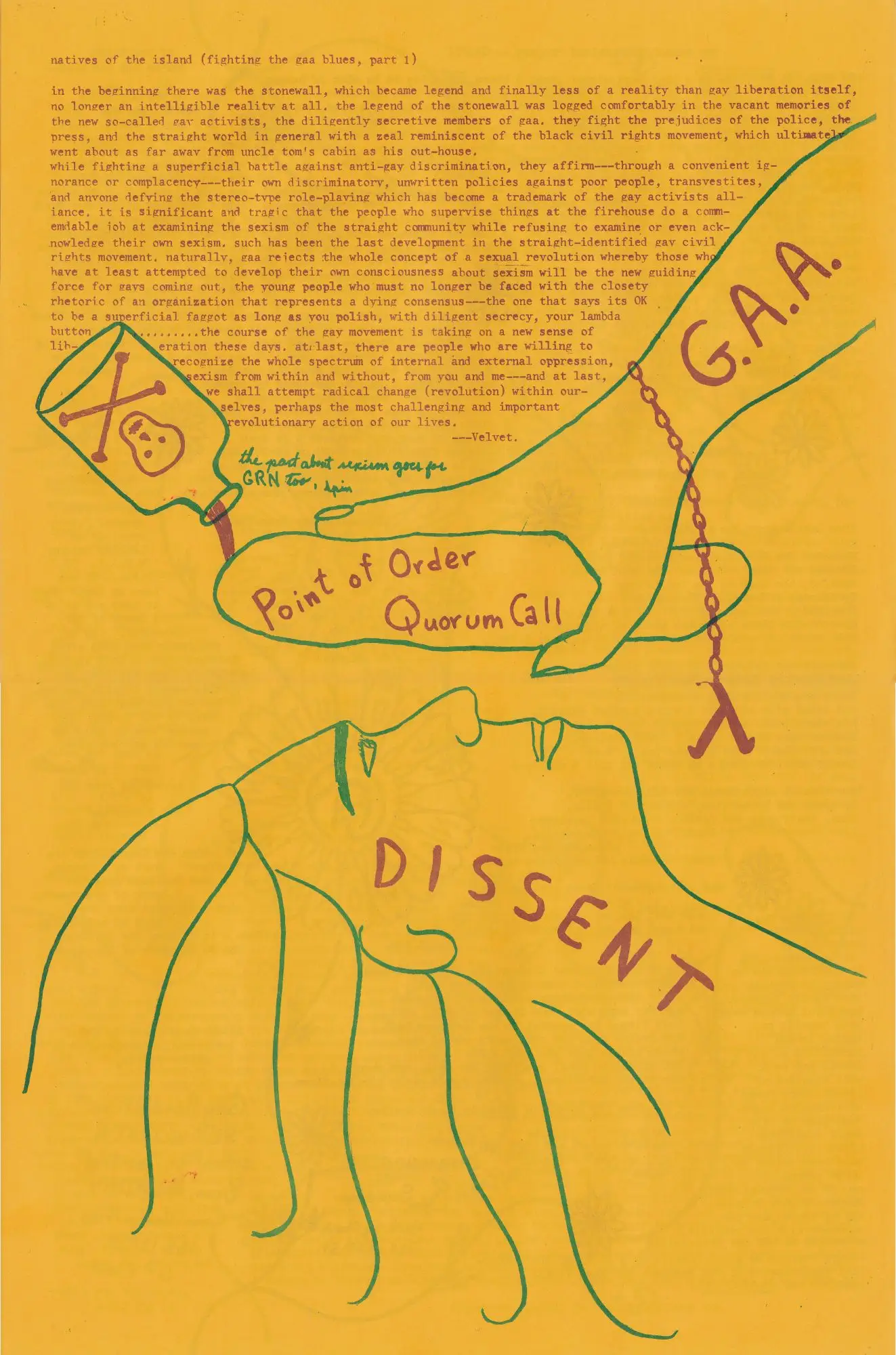And document it we must, because in addition to the removal of words now considered too “woke” to be published, entire government websites are being gutted or disappearing entirely. This should concern every US-American, regardless of political party or ideology. When I say the government is erasing our history, that “our” applies to all of us.
Activity tagged "history"
Community memory
Happy Labor Day. I wrote a Wikipedia article about the gay, anarchist, anti-profit publishing collective Come!Unity Press after stumbling across a poster they printed in 1971.
Serendipitously, while researching this article I came across a March 2024 talk about “Survival By Sharing” by Paul Soulellis , which features a photograph of a Community Memory terminal.
I'd come across some photos of these while looking for public domain photos of computers a couple weeks ago, and was disappointed at the time that I couldn't find a better photo than ones like this on Wikimedia Commons (derived from a scan of a 1974 newsletter):
Soulellis’ talk, however, features a much better photo of this very same terminal at Leopold's Records in Berkeley, CA, likely taken at the same time based on the outfit of the person featured in both shots!
The talk, which focuses on community and archives and collaborative art and resistance, has some really interesting throughlines with some of the things I’ve been thinking a lot about lately.
The Signal Journal of International Political Graphics and Culture published an interview with an early member of the C!UP collective in issue 5. You can borrow a copy for free from the Internet Archive. I was curious how the anarchists went from operating a printing press for a group of Quakers in exchange for free rent to running the whole shop. Turns out it came down to conflicts over topics including their nudism and a "political prisoner" (kitten) named Kropotkin. Signal recounts the story.
There’s another story from an early member of the collective to be found in the comments of a site called The People’s Graphic Design Archive: “They liked th[e rainbow ink] effect so much that they charged extra to print plain black ink”.
Hurrying through the National Gallery of Art five minutes before closing, I passed a Navajo weaving with a complex abstract pattern. Suddenly, I realized the pattern was strangely familiar, so I stopped and looked closely. The design turned out to be an image of Intel's Pentium chip, the start of the long-lived Pentium family.1 The weaver, Marilou Schultz, created the artwork in 1994 using traditional materials and techniques. The rug was commissioned by Intel as a gift to AISES (American Indian Science & Engineering Society) and is currently part of an art exhibition—Woven Histories: Textiles and Modern Abstraction—focusing on the intersection between abstract art and woven textiles.
Gay is angry
Today’s archive spelunking led me down a rabbit hole trying to learn more about the “Gay Revolution Networker” mentioned in this poster from 1971 (full size). The “Gay is Angry” poster is from the Library of Congress’s Yanker Poster Collection, but the LOC provides no further information on the GRN.
Some research by Langdon Manor Books into a flyer in their catalog suggests that the Gay Revolution Networker was a New York City-based gay collective, which held meetings at locations including the Washington Square Church and the Come!Unity Press, a gay anarchist collective and print shop in New York City that I want to learn more about.
This flyer — itself a fascinating piece, described by Langdon as “a gorgeous enigma” — advertises a meeting for the GRN, but also includes on the opposite side an essay by a person named Velvet, which denounces the Gay Activist’s Alliance as sexist and complacent, and notes “the part about sexism goes for GRN too”.
while fighting a superficial battle against anti-gay discrimination, they affirm---through a convenient ignorance or complacency---their own discriminatory, unwritten policies against poor people, transvestites, and anyone defying the stereo-type role-playing which has become a trademark of the gay activists alliance. it is significant and tragic that the people who supervise things at the firehouse do a commendable job at examining the sexism of the straight community while refusing to examine or even acknowledge their own sexism. such has been the latest development in the straight-identified gay civil rights movement. naturally, gaa rejects the whole concept of a sexual revolution whereby those who have at least attempted to develop their own consciousness about sexism will be the new guiding force for gays coming out, the young people who must no longer be faced with the closety rhetoric of an organization that represents a dying consensus---the one that says its OK to be a superficial faggot as long as you polish, with diligent secrecy, your lambda button.......... the course of the gay movement is taking on a new sense of liberation these days. at last, there are people who are willing to recognize the whole spectrum of internal and external oppression, sexism from within and without, from you and me---and at last, we shall attempt radical change (revolution) within ourselves, perhaps the most challenging and important revolutionary action of our lives.---Velvet.
I wonder what else can be found about Velvet.
The front side of the flyer makes reference to the “GRN Tearoom”, quoting graffiti by John:
When the Church does the
work of commerce,
And Business does the
work of government,
And government does the
work of criminals,
Then - it is time for criminals
to do the work of the church.
